Interactive fiction, often abbreviated IF, is software simulating environments in which players use text commands to control characters and influence the environment. Works in this form can be understood as literary narratives, either in the form of Interactive narratives or Interactive narrations. These works can also be understood as a form of video game, either in the form of an adventure game or role-playing game. In common usage, the term refers to text adventures, a type of adventure game where the entire interface can be "text-only", however, graphical text adventure games, where the text is accompanied by graphics still fall under the text adventure category if the main way to interact with the game is by typing text. Some users of the term distinguish between interactive fiction, known as "Puzzle-free", that focuses on narrative, and "text adventures" that focus on puzzles.

Return to Zork is a 1993 graphic adventure game in the Zork series. It was developed by Activision and was the final Zork game to be published under the Infocom label.

Level 9 was a British developer of computer software, active between 1981 and 1991. Founded by Mike, Nicholas and Pete Austin, the company produced software for the BBC Micro, Nascom, ZX Spectrum, Commodore 64, Oric, Atari 8-bit computers, Lynx 48k, RML 380Z, Amstrad CPC, MSX, Amiga, Apple II, Memotech MTX, and Enterprise platforms and is best known for its successful text adventure games until a general decline in the text adventure market forced their closure in June 1991.

Uninvited is a black-and-white horror-themed point-and-click adventure game. It was originally developed for the Macintosh by ICOM Simulations released in 1986 by Mindscape as part of the MacVenture series.

Moonmist is an interactive fiction game written by Stu Galley and Jim Lawrence and published by Infocom in 1986. The game was released simultaneously for the Amiga, Amstrad CPC, Apple II, Atari 8-bit computers, Atari ST, Commodore 64, MS-DOS, TRS-80, TI-99/4A, and Mac. It is Infocom's twenty-second game. Moonmist was re-released in Infocom's 1995 compilation The Mystery Collection, as well as the 1996 compilation Classic Text Adventure Masterpieces.
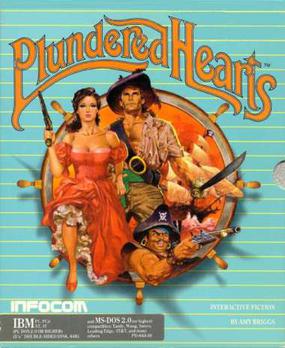
Plundered Hearts is an interactive fiction video game created by Amy Briggs and published by Infocom in 1987. Infocom's only game in the romance genre, it was released simultaneously for the Commodore 64, Atari 8-bit computers, Atari ST, Amiga, classic Mac OS, and MS-DOS. It is Infocom's twenty-eighth game.
Phantasie is a fantasy role-playing video game series designed by Winston Douglas Wood and published by Strategic Simulations in 1985. It was released for the Apple II, Atari 8-bit computers, Atari ST, Amiga, Commodore 64, MS-DOS, and MSX.
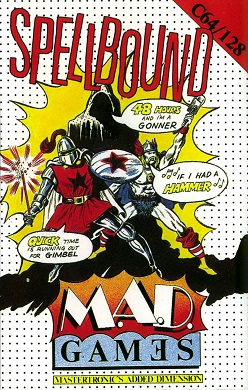
Spellbound is a video game that was designed and programmed by David Jones with music by Rob Hubbard and released in 1985 for the ZX Spectrum and Amstrad CPC home computers. Versions for the Commodore 64 and the Atari 8-bit computers and an enhanced 128K Spectrum version with music and additional graphics were all released in 1986. Unlike the other Magic Knight games, Spellbound was never released for the MSX system back in 1985, but an authorized version was finally released by Tracy Lewis in 2023. It is the second game in the Magic Knight series and was published by Mastertronic as part of their Mastertronic Added Dimension label.

The Guild of Thieves is an interactive fiction game by Magnetic Scrolls first published by Rainbird in 1987. The game takes place in Kerovnia, the setting of the company's earlier The Pawn.
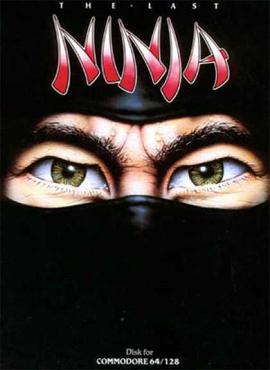
The Last Ninja is an action-adventure game originally developed and published by System 3 in 1987 for the Commodore 64. It was converted to the Apple IIGS, MS-DOS, BBC Micro and Acorn Electron in 1988, the Apple II series in 1989, the Amiga and Atari ST in 1990, and the Acorn Archimedes in 1991.

Knightmare is a video game released by Activision in 1987 for ZX Spectrum, Amstrad CPC, Commodore 64, and Atari ST. It was written by Mev Dinc, J.P. Dean, E.M. Dean and Nick Cooke, and is based on the Anglia Television show Knightmare. Four years later, Mindscape released entirely different game based on the show, also called Knightmare, for the Atari ST and Amiga.

The Hound of Shadow is an interactive fiction illustrated text adventure game created by Eldritch Games and published by Electronic Arts in 1989.

Moebius: The Orb of Celestial Harmony is a video game produced by Origin Systems and designed by Greg Malone. It was originally released in 1985 for the Apple II. Versions were also released for the Amiga, Atari ST, Commodore 64, Macintosh, and MS-DOS. The game is primarily a top-down view tile-based role-playing video game, but it has action-based combat sequences which use a side view, roughly similar to games such as Karateka.

Gnome Ranger II: Ingrid's Back is a text adventure game by Level 9 released in 1988. It is the sequel to Gnome Ranger The game has limited graphics on some platforms. A short novella by Peter McBride is included explaining the background to the story and providing hints for play.
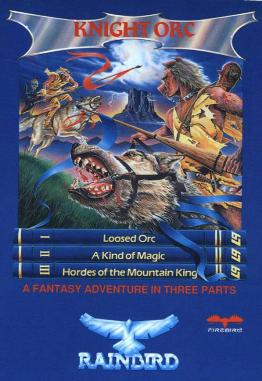
Knight Orc is a text adventure, with limited graphics on some platforms, by Level 9 released in 1987. It comes with a short novella by Peter McBride explaining the background to the story.
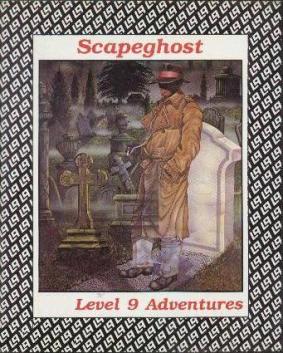
Scapeghost is a text adventure published by Level 9 Computing in 1989. It was the last text adventure game released by the company.

Star Trek: The Rebel Universe is an action-adventure computer game published by Firebird Software in Europe and Simon & Schuster Interactive in America. It was originally released for the Atari ST in 1987, and was followed the next year with versions for the Commodore 64 and DOS.

Nine Princes in Amber is an interactive fiction video game with graphics. The game was published by Telarium, a subsidiary of Spinnaker Software, in 1985. The game is based upon the fantasy novels Nine Princes in Amber and The Guns of Avalon by Roger Zelazny.

Phantasie is the first video game in the Phantasie series.


















